| |||||||||||||||||||||||||||||||||||||||||||||||||||||||||||||||||||||||||||||
All 200 seats in the Parliament of Finland 101 seats needed for a majority | |||||||||||||||||||||||||||||||||||||||||||||||||||||||||||||||||||||||||||||
|---|---|---|---|---|---|---|---|---|---|---|---|---|---|---|---|---|---|---|---|---|---|---|---|---|---|---|---|---|---|---|---|---|---|---|---|---|---|---|---|---|---|---|---|---|---|---|---|---|---|---|---|---|---|---|---|---|---|---|---|---|---|---|---|---|---|---|---|---|---|---|---|---|---|---|---|---|---|
| |||||||||||||||||||||||||||||||||||||||||||||||||||||||||||||||||||||||||||||
 |
|---|
Parliamentary elections were held in the Grand Duchy of Finland on 1 and 3 July 1916.
| |||||||||||||||||||||||||||||||||||||||||||||||||||||||||||||||||||||||||||||
All 200 seats in the Parliament of Finland 101 seats needed for a majority | |||||||||||||||||||||||||||||||||||||||||||||||||||||||||||||||||||||||||||||
|---|---|---|---|---|---|---|---|---|---|---|---|---|---|---|---|---|---|---|---|---|---|---|---|---|---|---|---|---|---|---|---|---|---|---|---|---|---|---|---|---|---|---|---|---|---|---|---|---|---|---|---|---|---|---|---|---|---|---|---|---|---|---|---|---|---|---|---|---|---|---|---|---|---|---|---|---|---|
| |||||||||||||||||||||||||||||||||||||||||||||||||||||||||||||||||||||||||||||
 |
|---|
Parliamentary elections were held in the Grand Duchy of Finland on 1 and 3 July 1916.
The Finnish Parliament had not been in session during the early years of World War I. The Russian army's severe losses to the German army started to awaken among the Finns the hope that they could get regain self-government. The Russian government's plan to totally Russify Finland had been leaked to several Finnish newspapers in 1914, and had been heavily criticized. Its implementation had been suspended for the duration of the war.
The workers' and tenant farmers' discontent with their social and economic problems was growing; workers still had to work an average of ten hours per day, and the tenant farmers still rented their lands from the landowning peasants, and they could be expelled from those lands if they did not fulfill their contracts' quite strict conditions. The Social Democrats managed to win their first and so far only parliamentary majority in the Finnish elections by promising more effectively than the bourgeois parties to help the poor and underprivileged people among the Finns. [1] [2]
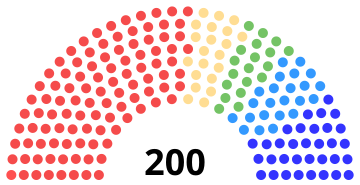 | |||||
|---|---|---|---|---|---|
| Party | Votes | % | Seats | +/– | |
| Social Democratic Party | 376,030 | 47.29 | 103 | +13 | |
| Finnish Party | 139,111 | 17.49 | 33 | –5 | |
| Young Finnish Party | 99,419 | 12.50 | 23 | –6 | |
| Swedish People's Party | 93,555 | 11.76 | 21 | –4 | |
| Agrarian League | 71,608 | 9.00 | 19 | +1 | |
| Christian Workers' Union | 14,626 | 1.84 | 1 | +1 | |
| Others | 860 | 0.11 | 0 | – | |
| Total | 795,209 | 100.00 | 200 | 0 | |
| Valid votes | 795,209 | 99.29 | |||
| Invalid/blank votes | 5,725 | 0.71 | |||
| Total votes | 800,934 | 100.00 | |||
| Registered voters/turnout | 1,442,091 | 55.54 | |||
| Source: Mackie & Rose [3] | |||||
The elections would have significant consequences for in Finland's political, administrative and social history. This was the first time the left had held a majority in Finnish parliament, which was only defeated in October 1917 after all the opposition parties, the Finnish Party, Young Finns, Swedish People's Party and Agrarians formed an electoral alliance, the "Bourgeoisie block". The Tokoi Senate was formed under Socialist Oskari Tokoi, one of the first de facto socialist prime ministers in the world (though his title was Chairman of the Senate). [4]
In March 1917 the February Revolution essentially forced Tsar Nicholas II, who had the highest authority in the Grand Duchy of Finland, and who could dissolve the Finnish parliament, to refuse any new laws and appoint a governor-general when he abdicated. This began an administrative crisis, both for the socialists and the bourgeoisie block, on how to proceed. The Provisional Republican Russian government was still in power and administration continued relatively normally, but domestic issues including rising inflation, food shortages and political radicalism was a daily issue in both cities and the countryside. [4]
During the July Days, when then-capital of the Russian provisional Republic, Petrograd, was experiencing anarchic chaos from both military units, anarchists and Bolsheviks, the Finnish parliament came to an agreement to pass and enforce the "Autonomy Law"/"Legality Act" (Valtalaki), which declared that the Finnish Parliament and its Senate was the highest political authority in Finland. The law was passed on 18 July 1917, but was never fully enforced. [5] Just the passage of the Valtalaki act complicated the legal administrative situation, as the (Swedish) Instrument of Government of 1772, which was the ruling law for political administration of the Grand Duchy of Finland, declared the Tsar to be the highest political authority in Finland, but now Nicholas II had abdicated and there was chaos in Petrograd. However, Petrograd's legal government regained control in late July and moderate Alexander Kerensky was appointed Prime Minister, while the Russian government under Kerensky refused to sign the Valtalaki into law as it would have essentially ceded all political and administrative powers of Finland except foreign and military policy to the Finnish parliament. Kerensky and the Petrograd government, still the highest political authority, decided to release a manifesto to break the Finnish Parliament. The manifesto declared, that the Russian provisional government was, legally speaking, the highest authority for the Grand Duchy of Finland, unless the Russian parliament or a Russian-based constitutional convention decided otherwise. This was a win for the "Bourgeoisie block", as in the upcoming elections they united against a common enemy, the Social Democrats, and managed to remove the Social Democrats' parliamentary majority. [6]
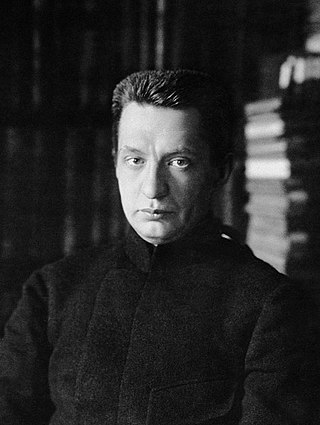
Alexander Fyodorovich Kerensky was a Russian lawyer and revolutionary who led the Russian Provisional Government and the short-lived Russian Republic for three months from late July to early November 1917.
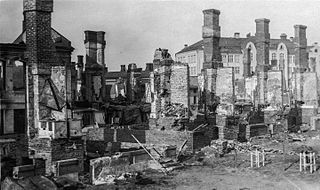
The Finnish Civil War was a civil war in Finland in 1918 fought for the leadership and control of the country between White Finland and the Finnish Socialist Workers' Republic during the country's transition from a grand duchy of the Russian Empire to an independent state. The clashes took place in the context of the national, political, and social turmoil caused by World War I in Europe. The war was fought between the "Reds", led by a section of the Social Democratic Party, and the "Whites", conducted by the conservative-based senate and the German Imperial Army. The paramilitary Red Guards, which were composed of industrial and agrarian workers, controlled the cities and industrial centers of southern Finland. The paramilitary White Guards, which consisted of land owners and those in the middle- and upper-classes, controlled rural central and northern Finland, and were led by General C. G. E. Mannerheim.

The Russian Revolution was a period of political and social revolution that took place in the former Russian Empire which began during the First World War. This period saw Russia abolish its monarchy and adopt a socialist form of government following two successive revolutions and a bloody civil war. The Russian Revolution can also be seen as the precursor for the other European revolutions that occurred during or in the aftermath of WWI, such as the German Revolution of 1918.

Kyösti Kallio was a Finnish politician who served as the fourth president of Finland from 1937 to 1940; his presidency included leading the country through the Winter War. After the war, he became both the first President of Finland to resign and the only one to die in office, dying of a heart attack while returning home after submitting his resignation, before the official end of his term.

Kaarlo Juho Ståhlberg was a Finnish jurist and academic, which was one of the most important pioneers of republicanism in the country. He was the first president of Finland (1919–1925) and a liberal nationalist.

The April Theses were a series of ten directives issued by the Bolshevik leader Vladimir Lenin upon his April 1917 return to Petrograd from his exile in Switzerland via Germany and Finland. The theses were mostly aimed at fellow Bolsheviks in Russia and returning to Russia from exile. He called for soviets, denounced liberals and social revolutionaries in the Provisional Government, called for Bolsheviks not to cooperate with the government, and called for new communist policies. The April Theses influenced the July Days and October Revolution in the next months and are identified with Leninism.

The Russian Republic, referred to as the Russian Democratic Federal Republic in the 1918 Constitution, was a short-lived state which controlled, de jure, the territory of the former Russian Empire after its proclamation by the Russian Provisional Government on 1 September 1917 in a decree signed by Alexander Kerensky as Minister-Chairman and Alexander Zarudny as Minister of Justice.

Soviets were political organizations and governmental bodies of the former Russian Empire, primarily associated with the Russian Revolution, which gave the name to the latter state of the Soviet Union. Soviets were the main form of government in the Russian SFSR, Free Territory, and to a much lesser extent were active in the Russian Provisional Government. It also can mean any workers' council that is socialist such as the Irish soviets. Soviets do not inherently need to adhere to the ideology of the later Soviet Union.
"Dual power" was a term first used by communist Bolshevik leader Vladimir Lenin (1870–1924) in the Pravda article titled "The Dual Power" which described a situation in the wake of the February Revolution, the first of two Russian Revolutions in 1917. Two powers coexisted with each other and competed for legitimacy: the Soviets, particularly the Petrograd Soviet, and the continuing official state apparatus of the Russian Provisional Government of the Social Revolutionaries.
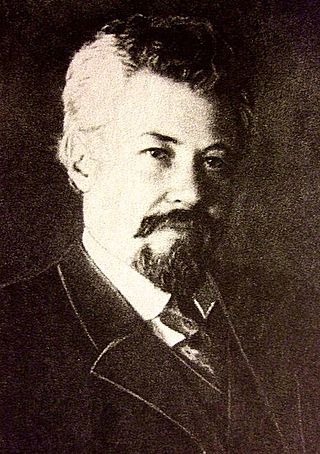
Elections to the Russian Constituent Assembly were held on 25 November 1917, although some districts had polling on alternate days, around two months after they were originally meant to occur, having been organized as a result of events in the February Revolution. They are generally recognised to be the first free elections in Russian history.

Finland declared its independence on 6 December 1917. The formal Declaration of Independence was only part of the long process leading to the independence of Finland.
Parliamentary elections were held in the autonomous Grand Duchy of Finland on 15 and 16 March 1907. They were the first parliamentary election in which members were elected to the new Parliament of Finland by universal suffrage and the first in the world in which female members were elected.
Parliamentary elections were held in the Grand Duchy of Finland on 1 and 2 July 1908.
Parliamentary elections were held in the Grand Duchy of Finland on 1 and 2 August 1913. In 1914, the Russian government decided to suspend the Finnish Parliament for the duration of World War I.
Parliamentary elections were held in the Grand Duchy of Finland on 1 and 2 October 1917. The general voter turnout was higher than in previous elections. The Social Democrats lost the absolute majority that they had had in the previous two elections. In other words, the "bourgeois" (non-socialist) parties taken together now had more than half the seats.

The Revolutions of 1917–1923 were a revolutionary wave that included political unrest and armed revolts around the world inspired by the success of the Russian Revolution and the disorder created by the aftermath of World War I. The uprisings were mainly socialist or anti-colonial in nature. Some socialist revolts failed to create lasting socialist states. The revolutions had lasting effects in shaping the future European political landscape, with for example the collapse of the German Empire and the dissolution of Austria-Hungary.

The Russian Provisional Government was a provisional government of the Russian Republic, announced two days before and established immediately after the abdication of Nicholas II. The intention of the provisional government was the organization of elections to the Russian Constituent Assembly and its convention. The provisional government, led first by Prince Georgy Lvov and then by Alexander Kerensky, lasted approximately eight months, and ceased to exist when the Bolsheviks gained power in the October Revolution in October [November, N.S.] 1917.
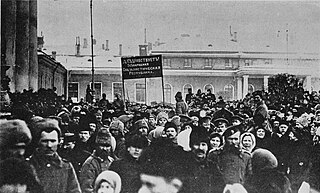
The February Revolution, known in Soviet historiography as the February Bourgeois Democratic Revolution and sometimes as the March Revolution, was the first of two revolutions which took place in Russia in 1917.
Events from the year 1917 in Russia.
Events in the year 1917 in Finland.